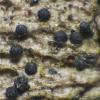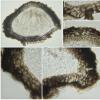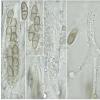
19-12-2025 10:10
Patrice TANCHAUDBonjour, récolte réalisée en milieu dunaire, a

18-12-2025 17:23
 Bruno Coué
Bruno Coué
Bonjour,je serais heureux d'avoir votre avis sur c

18-12-2025 21:17
Pol DebaenstThe identification took me to Byssonectria deformi

18-12-2025 18:07
Margot en Geert VullingsThese plumes were found on rotten wood.They strong

17-12-2025 18:35
 Michel Hairaud
Michel Hairaud
Bonjour à tous/Hi to everyone I am passing along

15-12-2025 15:48
 Danny Newman
Danny Newman
Melanospora cf. lagenaria on old, rotting, fallen

15-12-2025 15:54
 Johan Boonefaes
Johan Boonefaes
Unknown anamorph found on the ground in coastal sa

15-12-2025 21:11
 Hardware Tony
Hardware Tony
Small clavate hairs, negative croziers and IKI bb

15-12-2025 07:09
 Danny Newman
Danny Newman
indet. Rutstroemiaceae sp. on unk. fallen leavesMc
Kirschsteiniothelia
Gernot Friebes,
15-03-2013 20:47
I collected this species on a decorticated branch of Castanea or Quercus lying on the ground. Here's a decription:
Ascomata 240-260 µm ø, 175-185 high (only 2 ascomata measured, size probably varies more), black, semi-immersed to superficial, surface rough, somewhat triangular (bottom flattened), ostioles not observed. Ascomatal wall hard when dry but leathery when moist, 18-40 µm (basal 18-28, side 25-40) thick. Ascospores 1-septate, upper half usually wider than lower half, constricted at septum, smooth, light brown, 11–14,5 x 4-4,5 µm. Asci bitunicate, 8-spored, 57-66 x 9-10 µm. Interascal filaments present, filiform. No reaction in IKI.
I interpreted the flattened, triangular ascomata in combination with bitunicate asci, pseudoparaphyses, two-celled, coloured ascospores and ascomatal wall consisting of rather big cells as signs that this fungus belongs in the genus Kirschsteiniothelia. Since I've only found K. aethiops before I'm not very familiar with other species of this genus. Therefore, I checked the ascospores dimensions of all taxa listed in MycoBank in the hope of finding a matching species. The only species coming close in ascospore size are K. recessa measuring (14)15-17.5 x 5-6.5(7) µm (Hawksworth 1985) and K. populi with ascospores measuring 12 x 6 according to Saccardo's Sylloge Fungorum. Unfortunately, I don't have the work of You Z. Wang, Aptroot & K.D. Hyde, Revision of the genus Amphisphaeria (2004) in which I expect a more detailed description of K. populi. It'd be great if someone could send it to me.
Has anyone found something similar to this species? All thoughts on my find are welcome!
Best wishes,
Gernot
Jacques Fournier,
15-03-2013 22:14

Re : Kirschsteiniothelia
Hi Gernot,
based on Wang et al illustrations of the holotype of K. populi, asci are cylindrical with uniseriate ascospores and ascospores 14-18 x 5-6 µm are more rounded and have a stronger constriction at the septum. It seems different from your fungus. I will send you a photo.
Cheers,
Jacques
based on Wang et al illustrations of the holotype of K. populi, asci are cylindrical with uniseriate ascospores and ascospores 14-18 x 5-6 µm are more rounded and have a stronger constriction at the septum. It seems different from your fungus. I will send you a photo.
Cheers,
Jacques
Gernot Friebes,
16-03-2013 11:01
Re : Kirschsteiniothelia
Thanks for the pages, Jacques! Yes, K. populi does look like a different species. K. recessa on the other hand fits really well except for the bigger ascospores and the fact it was described from North America. For now, I will call this find Kirschsteiniothelia sp.
Best wishes,
Gernot
Best wishes,
Gernot



